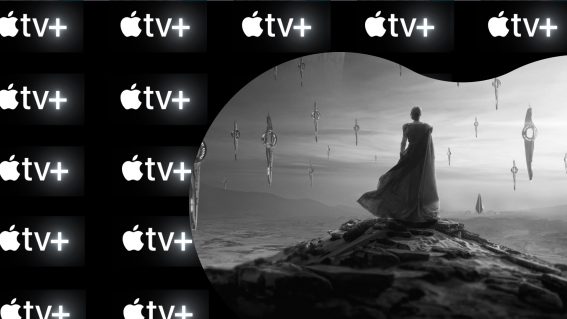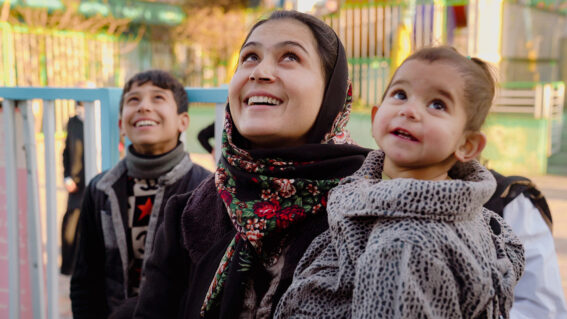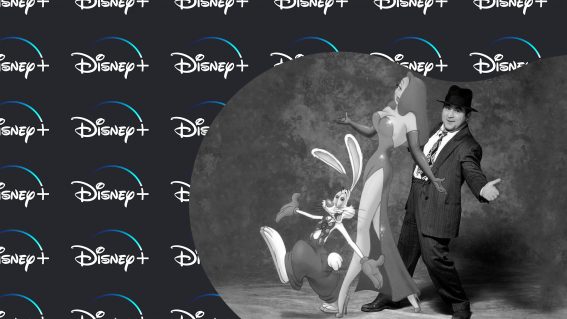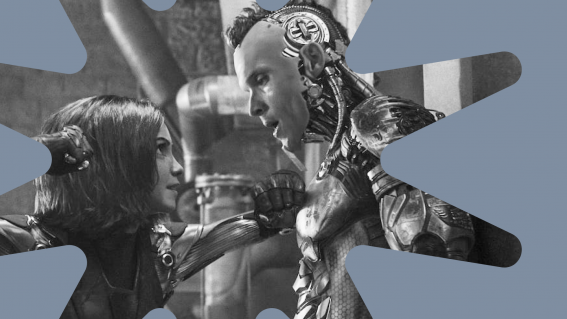The movies that inspired The Mandalorian

The Mandalorian is, more than most Star Wars productions, a heady concoction of pop culture influences. Critic Travis Johnson explores the movies that inspired the smash-hit Disney+ series.
Star Wars has always lifted liberally from pre-existing pop culture and the hit series The Mandalorian, exclusive to Disney+, is no exception. While the tale of Pedro Pascal’s helmeted bounty hunter is steeped in Star Wars lore, even non-fans can’t help but notice the debt it owes to westerns, “chambara” samurai movies and more.
So, if you’re jonesing for a fix in between your weekly doses of The Mandalorian, try giving some of these titles a spin.
The Dollars Trilogy (1964 – 1966)
Sergio Leone’s revered spaghetti western trilogy is the reason Star Wars has bounty hunters at all; The Mandalorian is essentially Clint Eastwood’s character in space. A Fistful of Dollars, A Few Dollars More and The Good, the Bad, and the Ugly collectively follow the hyper-violent exploits of assorted amoral mercenaries on a barren and sun-blasted frontier.
A man’s own code means more than the rule of law, and skill with a gun means the difference between life and death. Sound familiar? For added fun, just imagine IG-88 instead of Lee Van Cleef in the third film.
Lone Wolf and Cub (1972 – 1974)
So, spoiler alert: The Mandalorian winds up the unwilling protector of a baby Yoda at the end of the first episode. The tough guy/cute kid trope is a venerable one, seen in everything from Luc Besson’s The Professional to James Mangold’s Logan. But if we’re going to zero in on just one exemplar it has to the insanely bloody Japanese film series, Lone Wolf and Cub, adapted from Kazuo Koike and Goseki Kojima’s manga.
When the shogun’s official executioner, Ogami Itto (Tomisaburo Wakayama) is framed for treason, rather than slit open his belly he sets off on a path of bloody retribution, taking along with him his infant son Daigoro. What follows is six films of wanton butchery as Itto carves his way through armies of opponents while young Daigoro placidly watches on – and sometimes participates. While The Mandalorian will never be as gory (if nothing else, Disney’s shareholders would mutiny), Lone Wolf’s bloody fingerprints are unarguably on the series.
The Searchers (1956)
While the tone and plot of The Mandalorian hearkens back to spaghetti Westerns, its sweeping desert vistas owe their existence to the films of John “I make Westerns” Ford. And if you’re going to pull just one vintage oater out of his body of work to stand in for lot, it must be The Searchers. John Wayne is Confederate veteran Ethan Edwards, am embittered old campaigner who undertakes a years-long quest to rescue his niece, Debbie (Natalie Woods) from Comanche raiders.
The Searchers is lauded as one of the most psychologically complex westerns of the classical period. But it’s the those technicolor Monument Valley vistas that linger in the memory. When Mando is riding across the desert with Nick Nolte’s wizened Ugnaught, it’s a pretty close fit for Wayne and co-star Jeffrey Hunter here.
Hard Boiled (1992)
Are we double-dipping here? This is, after all, another tough guy/cute kid film for at least part of its running time, but The Mandalorian owes more to John Woo’s incandescent action opus than that. Chow Yun Fat is tough cop Tequila, hell bent on taking down a Hong Kong gun-running ring. Tony Leung is undercover cop Alan, whose loyalties are becoming increasingly conflicted.
What ensues is one the most over-the-top action movies ever made, a superlative ballet of bullets that puts most American shoot-em-ups to shame. A few commentators have compared the climactic shoot-out in the third episode of The Mandalorian to John Wick but c’mon – it’s only a space-dove or two away from being a signature John Woo fight.
Fallout (1997 – present)
Not actually a movie! Still, we’d be remiss if we didn’t include Bethesda’s long-running post-apocalyptic computer game franchise, its chief iconography involving heavily armed guys in powered armour bestriding a desert wasteland.
The Mandalorian actually owes a lot of its structure and narrative style to video games in general (what is episode two if not a side quest?) but if you confused the TV series’ Mandalorians, a secretive, quasi-religious sect of warriors who are known for their distinctive armour, with Fallout’s Brotherhood of Steel, a secretive, quasi-religious sect of warriors who are known for their distinctive armour, well, we wouldn’t blame you.














